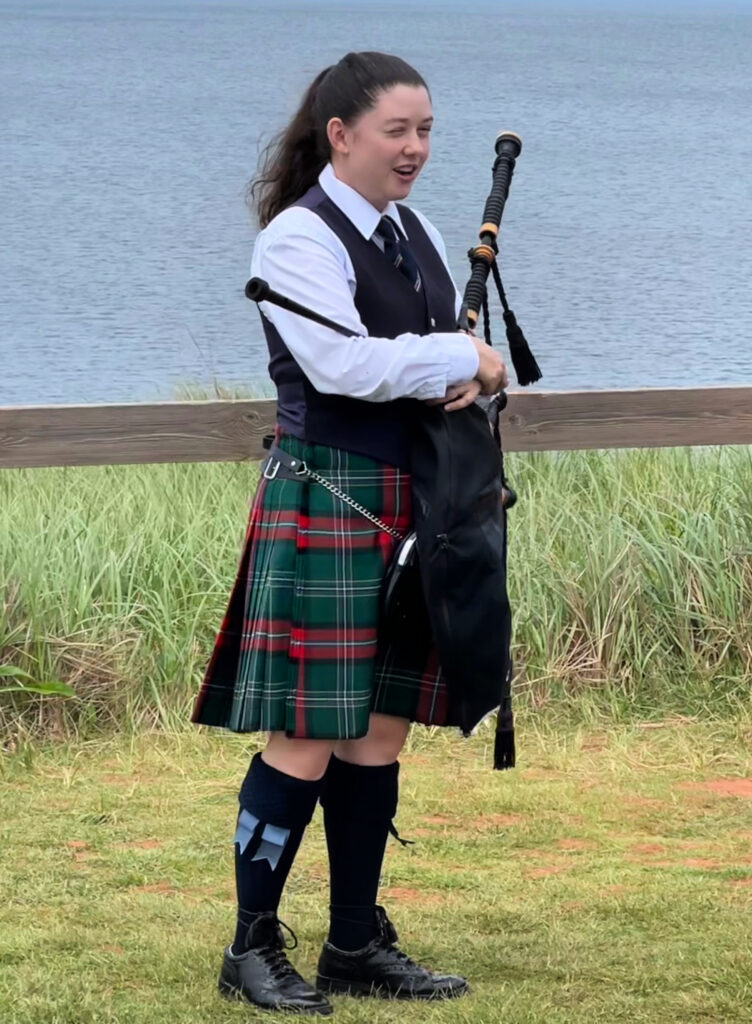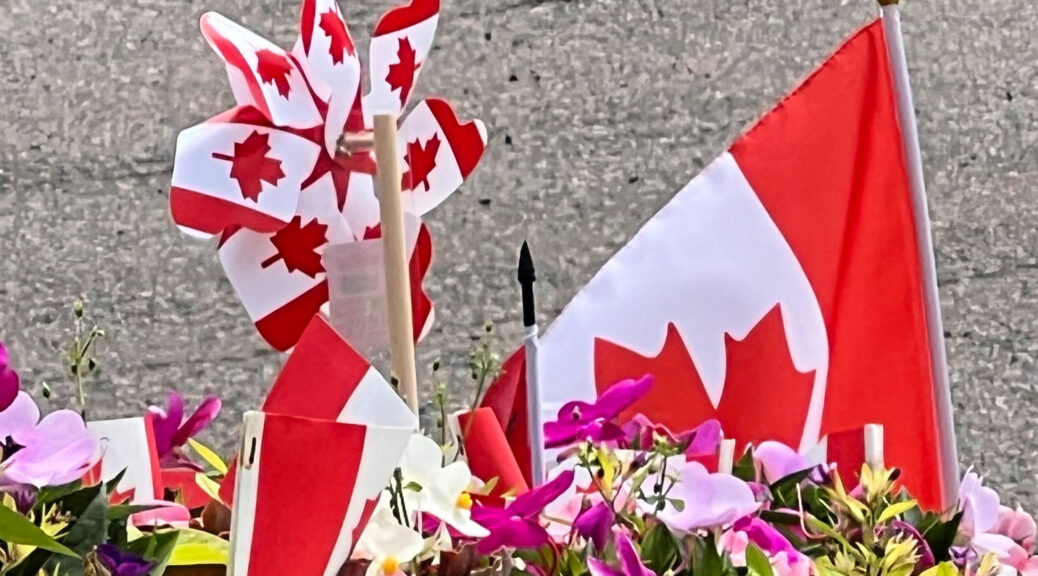
Prince Edward Island
Before we left Nova Scotia for Prince Edward Island (PEI), we learned a little about the First Nations people, especially the Mi’kmaq. For a long time, their stories were passed from one generation to the next by word of mouth. A missionary, Reverend Silas Tertius Rand, spent about 40 years with the Mi’kmaq and other First Nations people, making one of the first written recordings of some of their stories and legends.
The Mi’kmaq people believed that Glooscap was the first human. A statue of Glooscap is pictured below. He had great powers and is credited with shaping the landscape. Glooscap is said to have lived mainly in Nova Scotia. He never grew old and never died. First Natons people consider him to still be living.
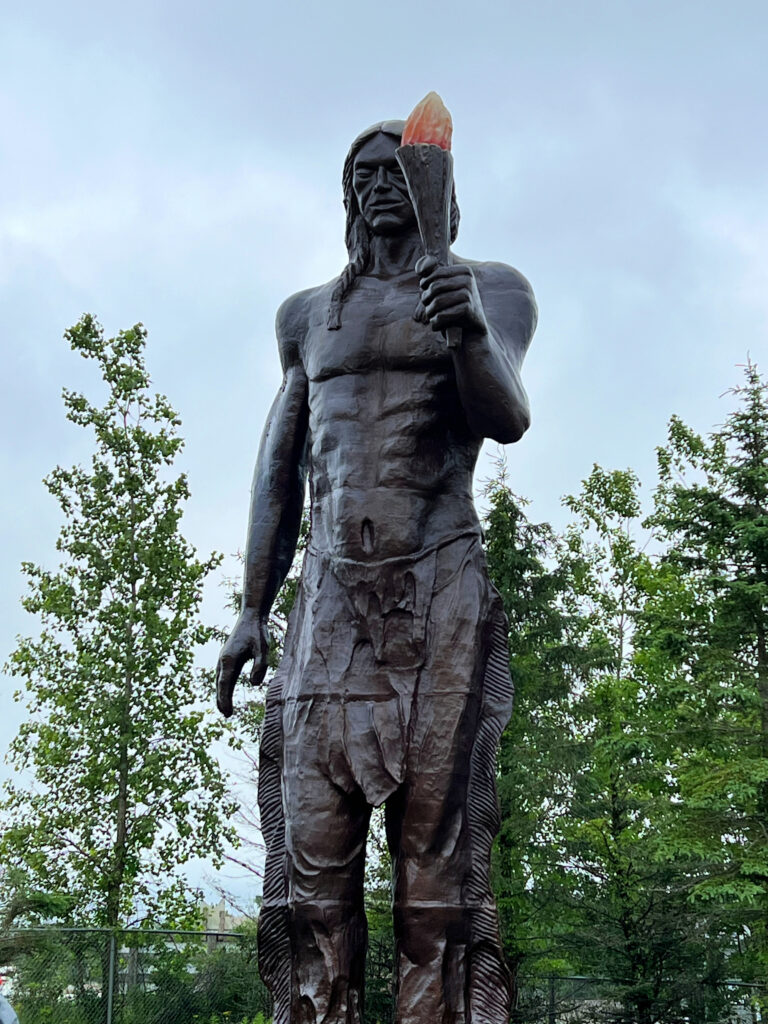
On our way to PEI, we crossed into New Brunswick. We had an excellent seafood dinner in Moncton at a restaurant called Windjammer. Even better was the Caesar Salad prepared tableside and our dessert, Strawberry Flambé with Ice Cream.
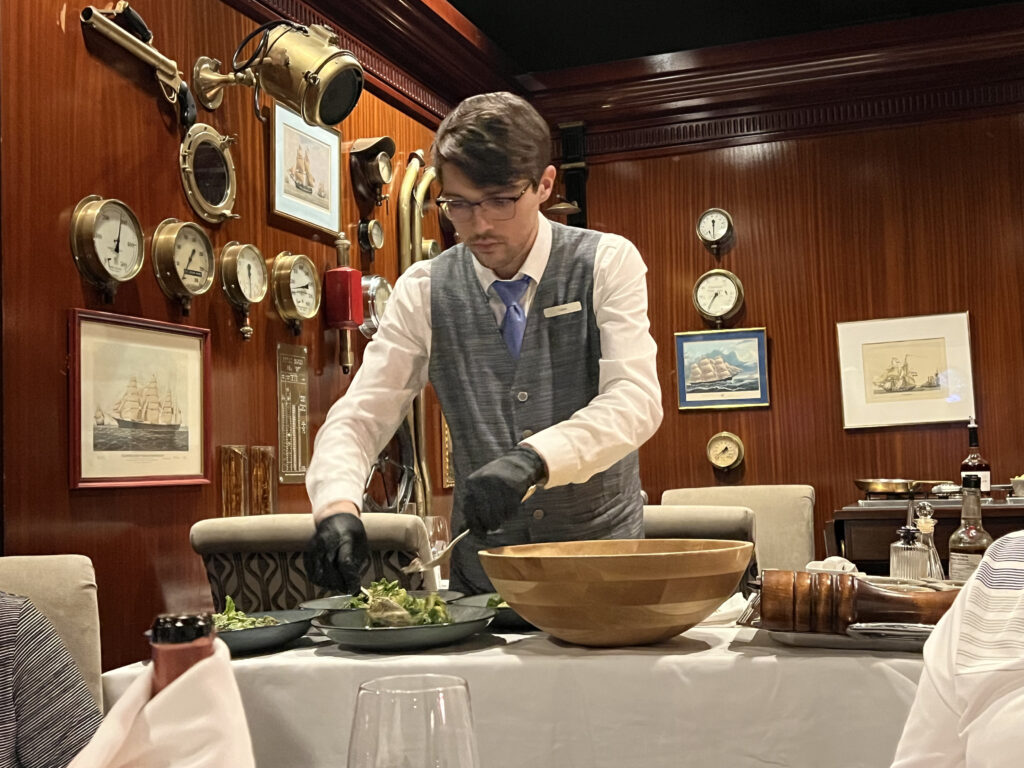
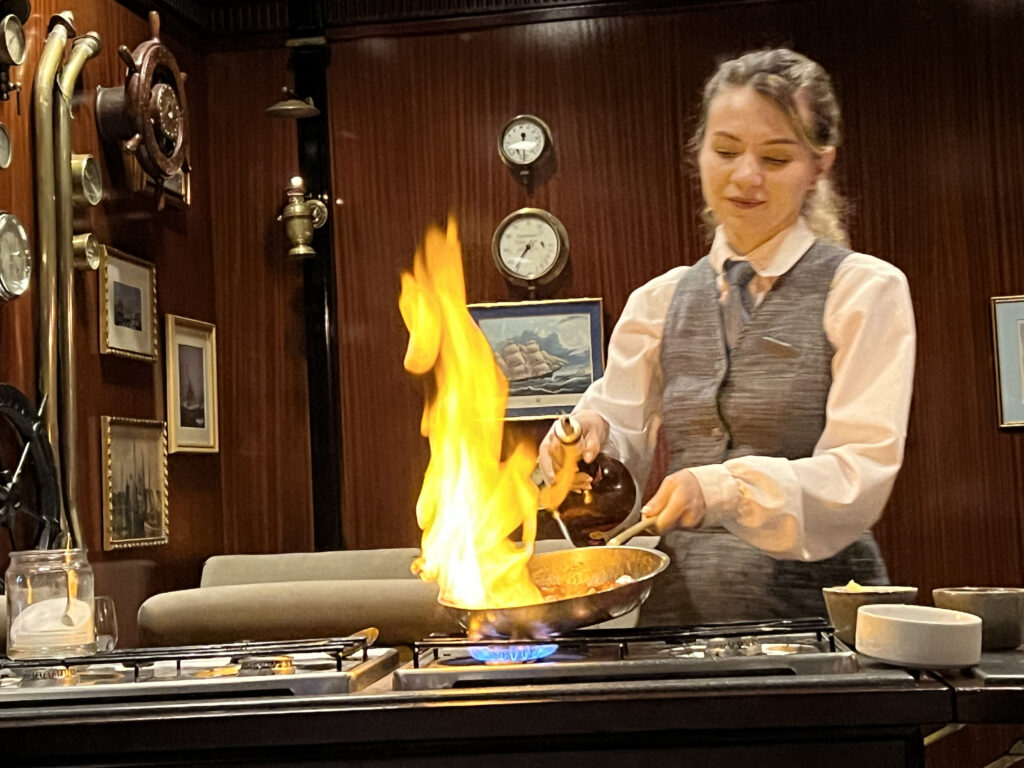
We had lunch the next day on a lobster boat on Shediac Bay, also in New Brunswick. We learned about catching lobster in lobster traps and efforts to conserve the lobster population. Captain Ron also explained how to prepare lobster and how to eat them. It was great fun!
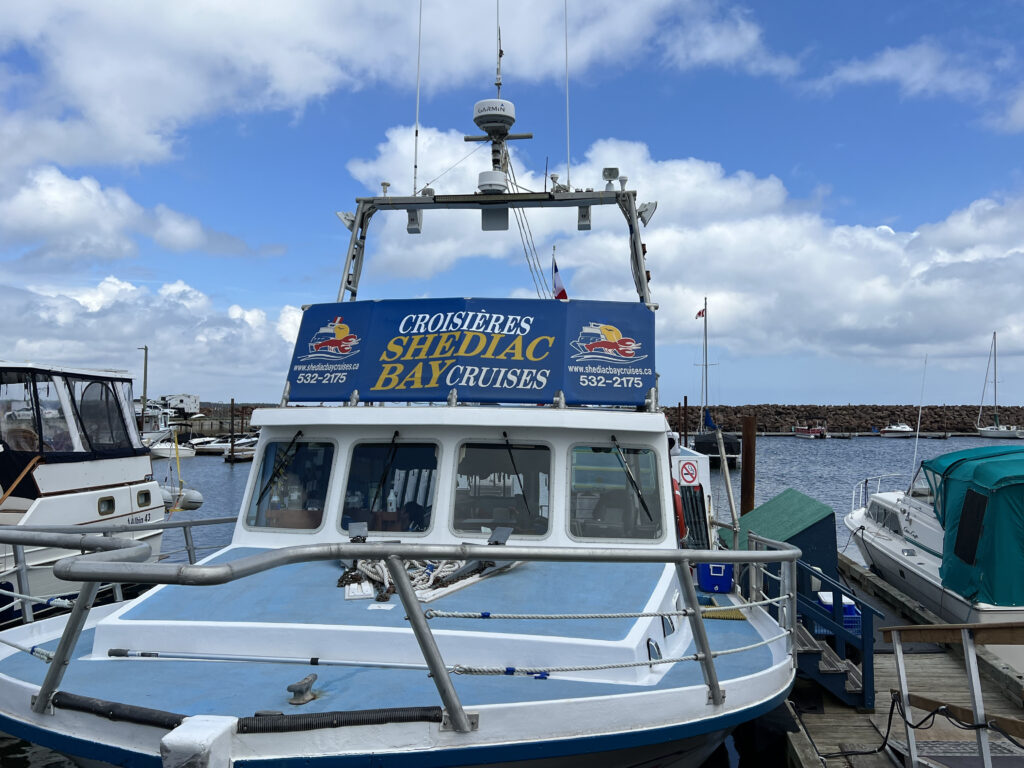
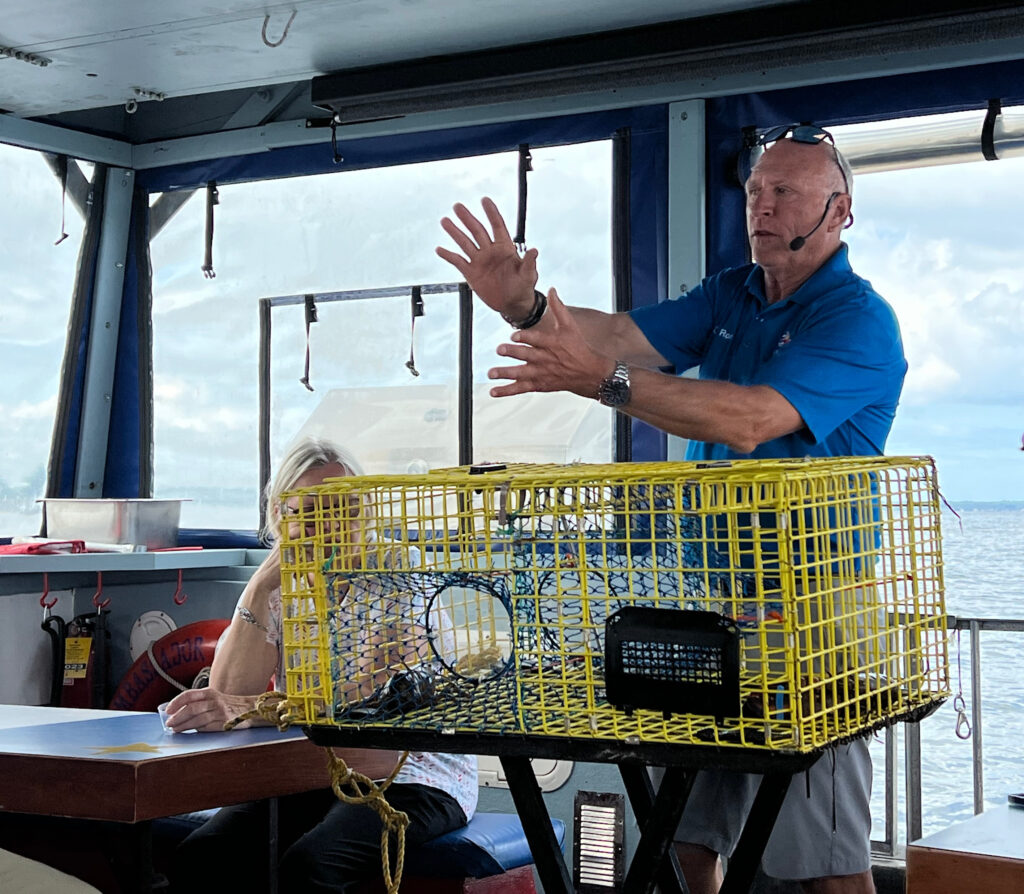
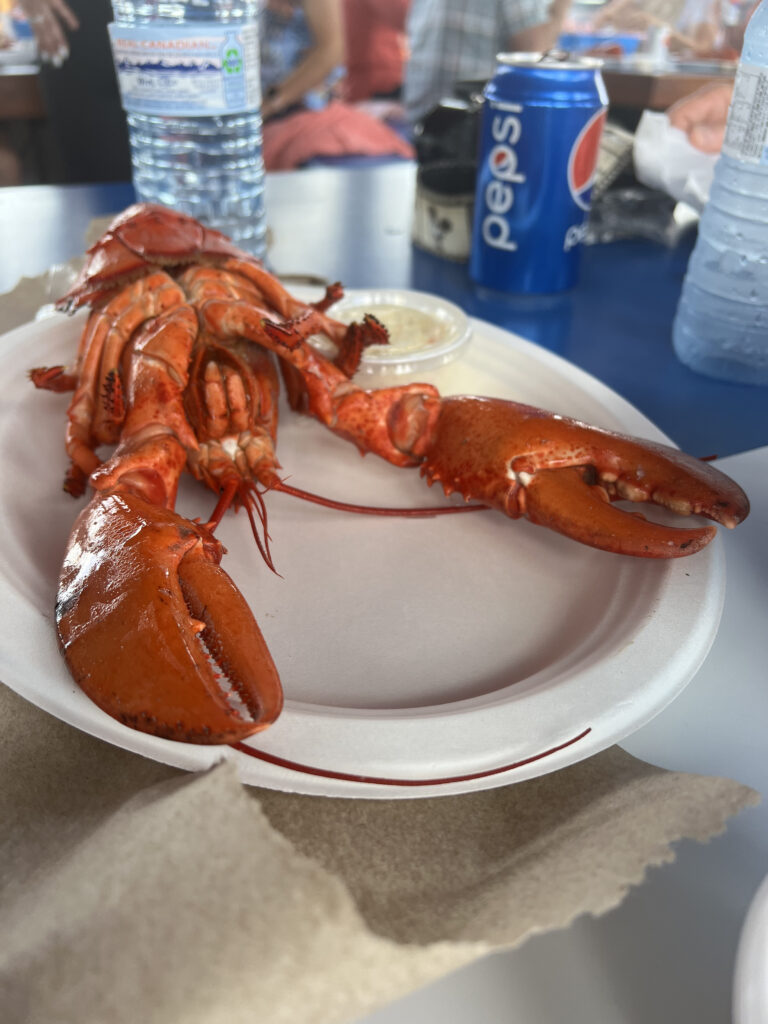
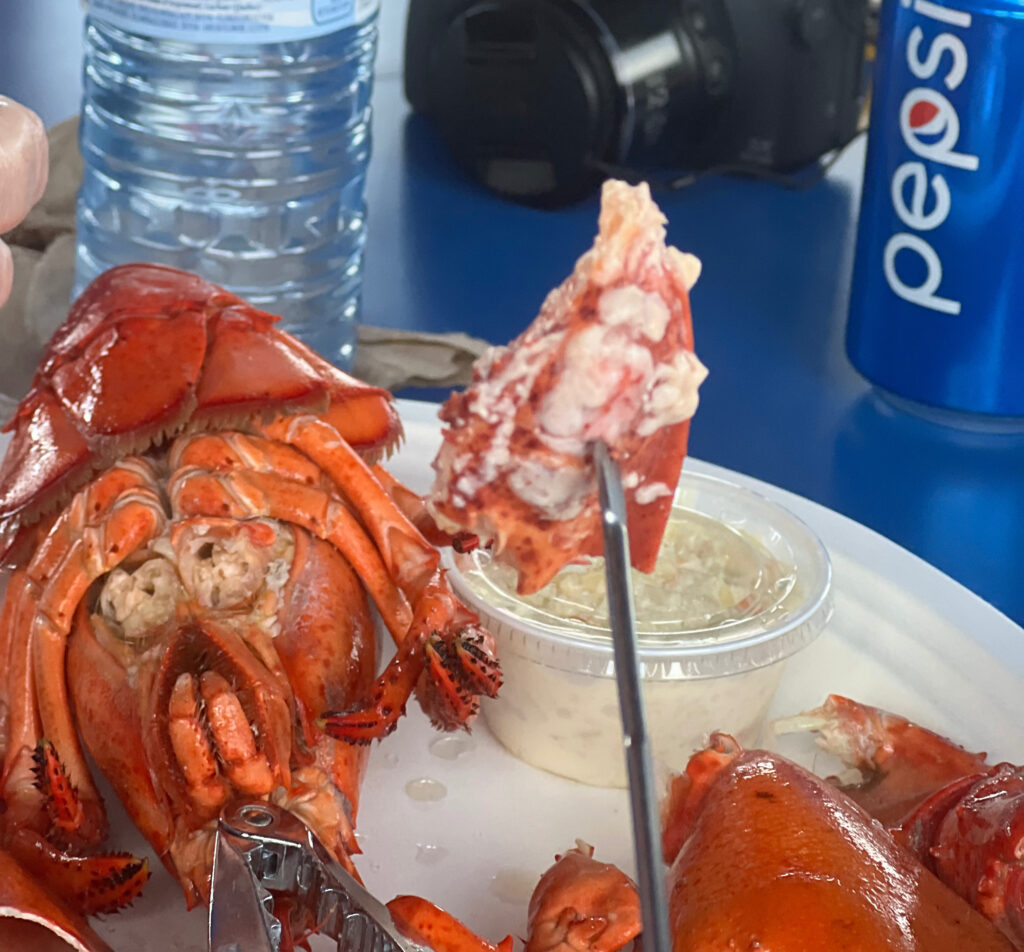
We were next headed to Charlottetown on Prince Edward Island, known as the birthplace of the Confederation. In 1864, delegates from Nova Scotia, New Brunswick and Prince Edward Island planned to meet to discuss uniting and becoming a confederation. They were persuaded by a contingent from the Province of Canada (Ontario and Quebec), who were not originally invited, to work toward the union of all the British North American colonies.
When delegates from Nova Scotia and New Brunswick arrived, they found no hotel accommodations had been reserved. And little were available because a circus was in town. Charlottetown had not hosted a circus in 20 years – and there was more excitement about the circus than the arrival of the delegates. Delegates from the Province of Canada arrived by steamship. The ship functioned as a floating hotel for the delegates. PEI minister W.H. Pope was rowed out to greet them in a fishing boat. This is depicted by the statue below.
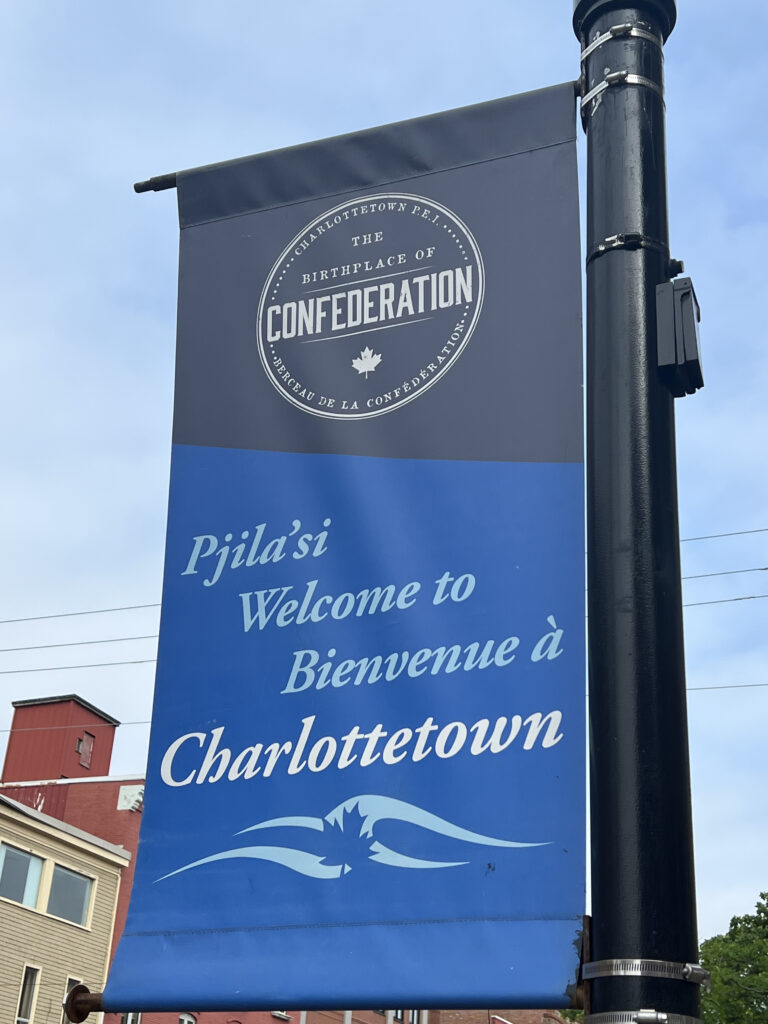
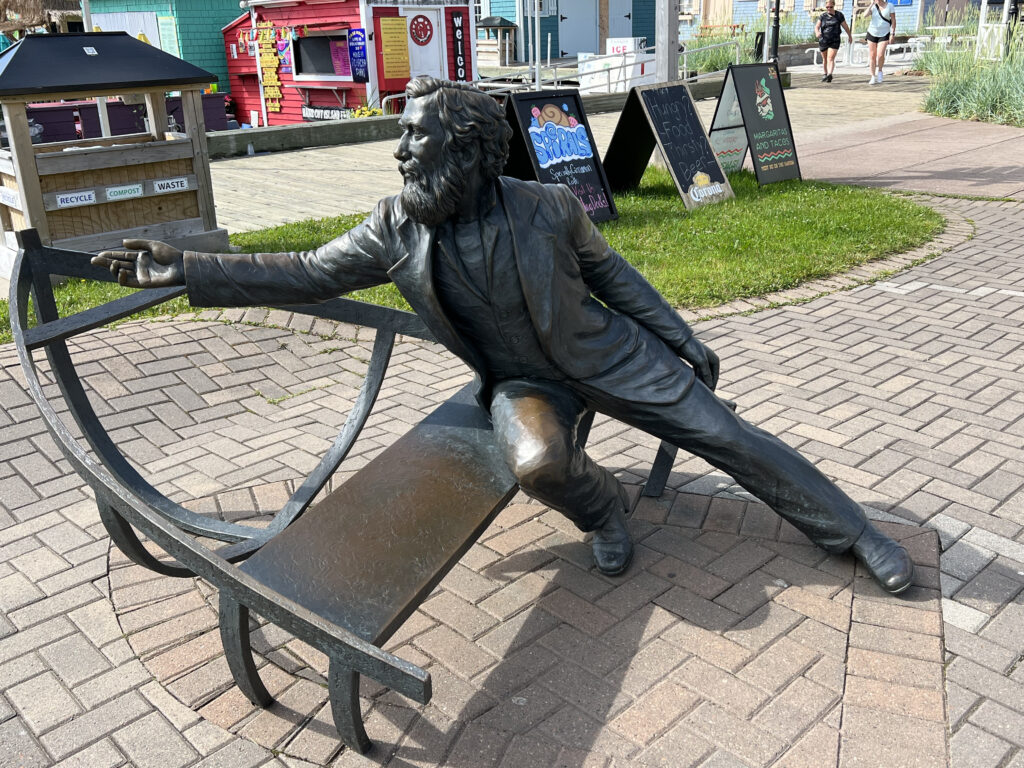
The interest in establishing a confederation was mainly due to external threats. A huge army was formed in the United States during the American Civil War. In addition, Britain wanted to reduce its financial and military obligations to its North American colonies. These factors led Canada to fear the United States might attempt to annex them.
After the 1864 meetings in Charlottetown, additional meetings were held culminating in the establishment of the Confederation on July 1, 1867. The picture below shows the delegates attending the conference. Later, six additional provinces and three territories would join the Confederation, establishing Canada as we know it. July 1, 1867, an important day in Canada’s history, is celebrated every July 1st as Canada Day – and this year we were there for the celebration!
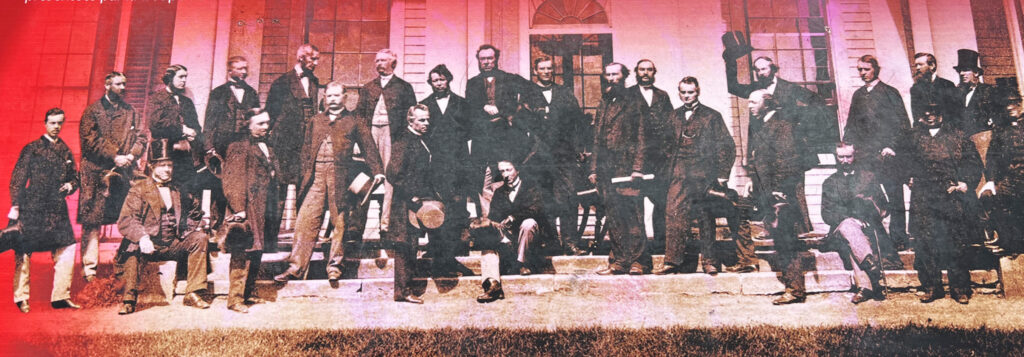
The Confederation Bridge is pictured below. It joins the provinces of Prince Edward Island and New Brunswick. The curved, 8 mile-long bridge is the longest in the world crossing ice-covered water. It is considered one of Canada’s top engineering achievements of the 20th Century.
The decision to replace ferry service with a bridge resulted in a heated debate throughout the 1980s. Eventually, it was decided that the issue would be settled at the polls. The government’s favorite bridge design was proposed to residents. Prince Edward Islanders voted if the bridge should be built. At the polls, 59.4% of Islanders voted “Yes” to the bridge. Construction took four years. The Confederation Bridge opened on May 31, 1997.
Before the bridge was built, three lighthouses guided ferries safely into Port Borden. The lighthouse pictured is the Port Borden Front Range Lighthouse. It is 22 feet tall. Ferry service was discontinued and the lighthouses decommissioned with the opening of the Confederation Bridge.
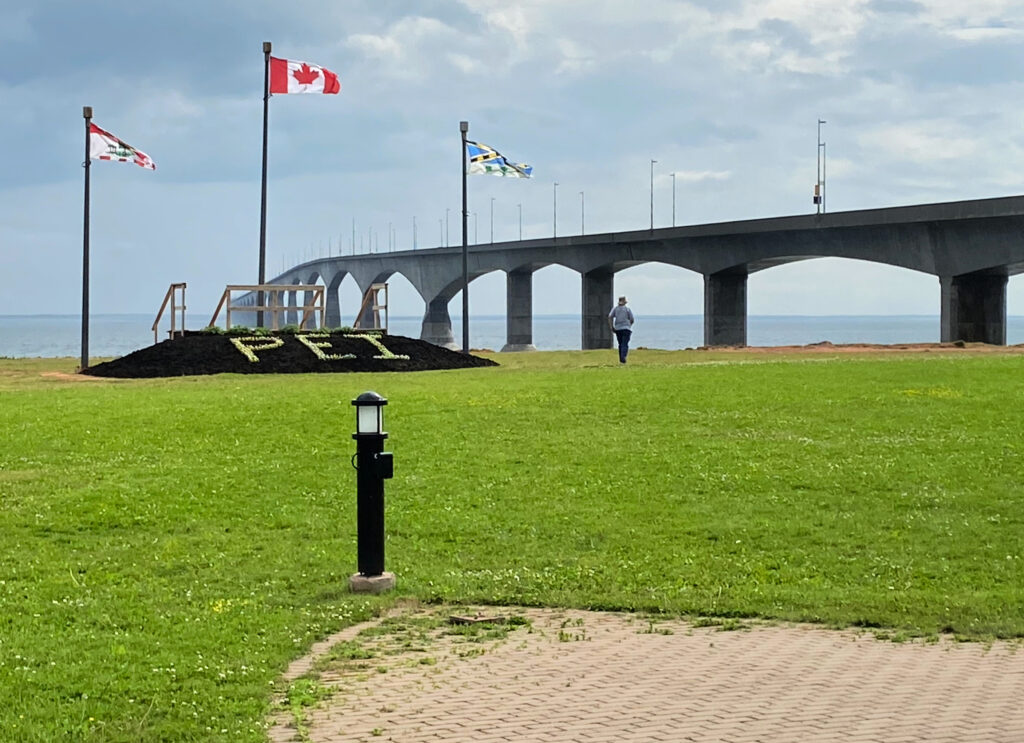
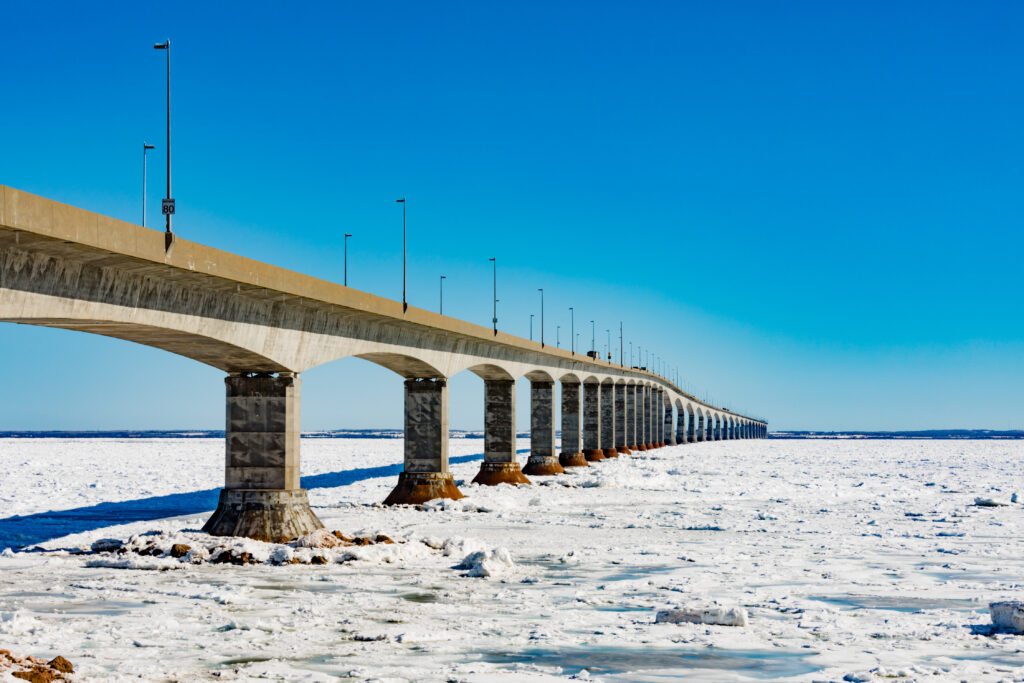
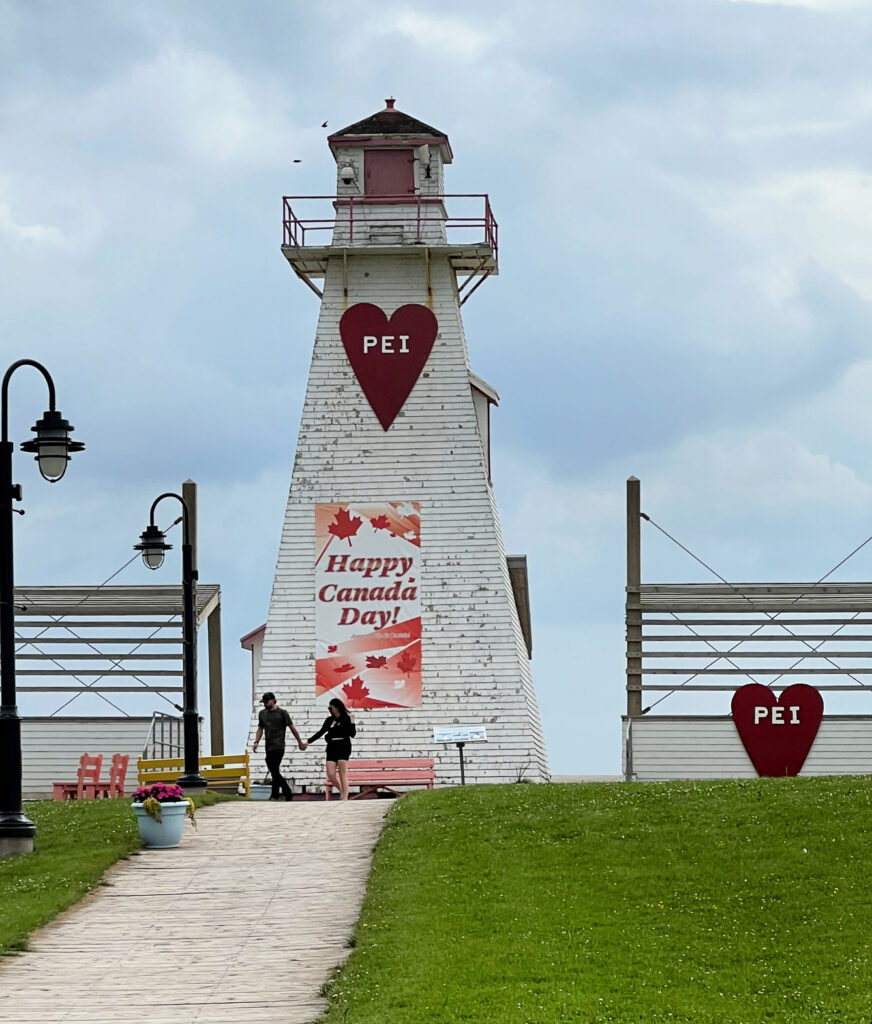
Next are pictures of Prince Edward Island National Park. Their website highlights its many features: “Gentle surf strokes sandy beaches alongside red cliffs and wind-sculpted dunes.”
But on September 23, 2022, Hurricane Fiona’s winds left damage across the province. In PEI National Park, storm impacts included the falling of thousands of trees, road and beach access washouts, and the significant erosion of the park’s shoreline, including sand dunes. Even nearly a year later, we saw some of this damage.
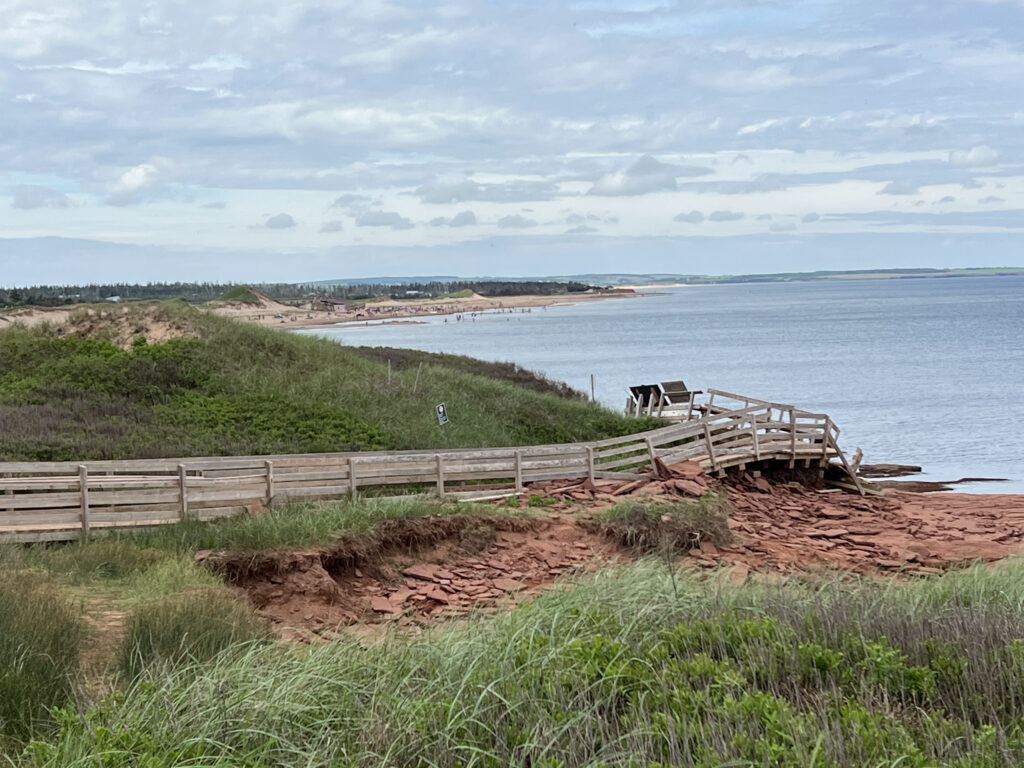
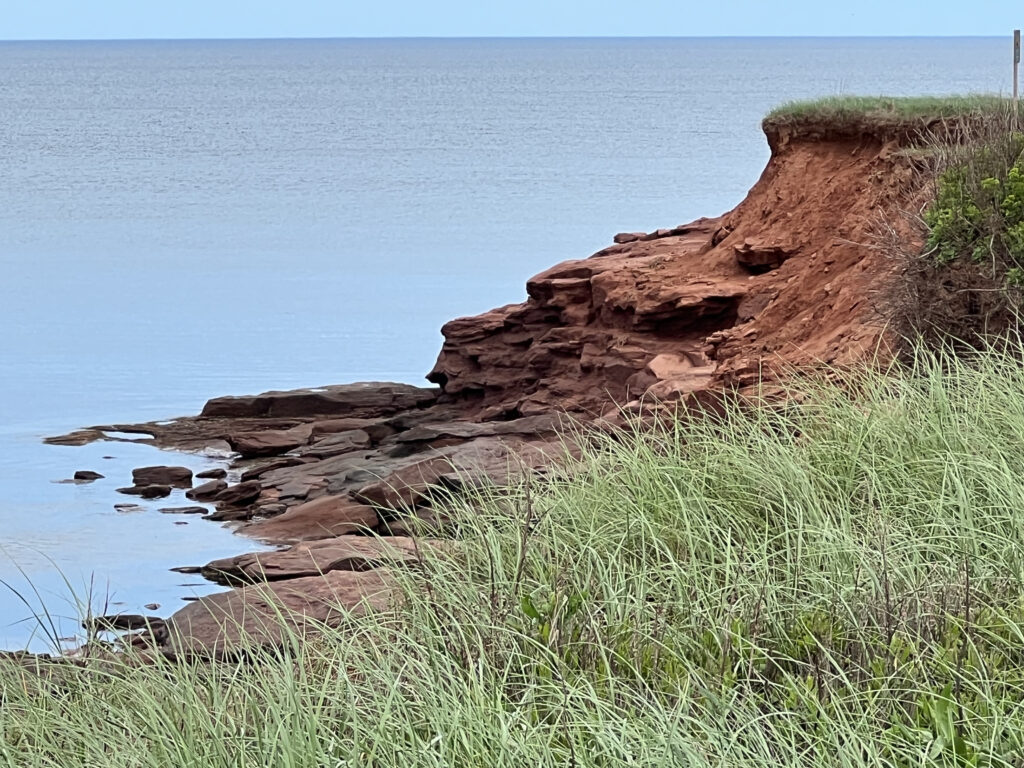
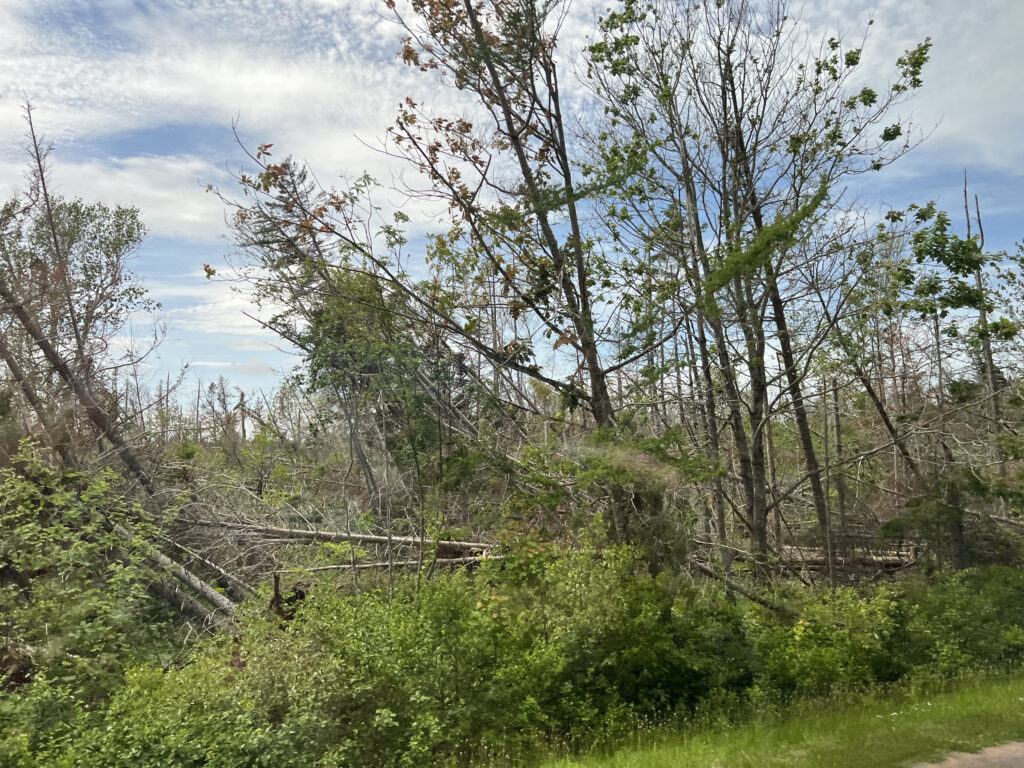
While we were at PEI National Park, a woman who plays the bagpipes played for us and also explained how bagpipes work. She plays into one pipe called a blowpipe. It is the larger one on her left side. This fills a reservoir that she controls with pressure from her arm. As she talked with us, this reservoir was the bag beneath her waist. When she plays, it is at her side under her arm. By applying pressure, she is able to maintain a continuous even sound. Another important pipe is the chanter or melody pipe. It is played with two hands and allows her to play nine different notes. The chanter is the pipe by her right arm. Her performance and explanation of how bagpipes work were a nice way to conclude our visit to Prince Edward Island.
